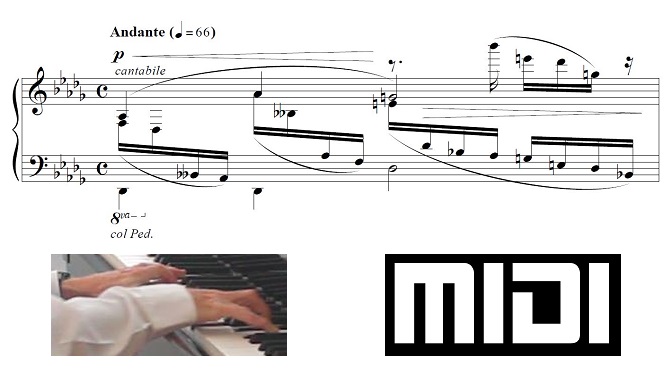Technology and Playability
Modern technology is a blessing for modern composers. It enables us to create and disseminate professional-quality scores with little or no reliance on professional publishers, and to bring performances of our music almost instantly to a worldwide audience in both audio and video. But many modern composers work on a much more intimate level with technology, using software systems based on MIDI (Musical Instrument Digital Interface). MIDI sequences can be translated directly into sound using electronic synthesizers and samplers. The sequences can be based on input from human performers, from scores in electronic form, or a combination of the two.
In a world where it is often difficult to find professional-level human performers for new compositions, many composers rely on MIDI-based systems to realize their works into sound. One of the unfortunate consequences is that contemporary composers may not develop a clear sense of what is playable, and may even come to regard playability as irrelevant to their work. That may explain why we find on the Internet a plethora of new electronically produced piano compositions that sound impressive, but which would be very difficult or impossible to realize with human hands on a real piano.
Of course, if one regards one’s compositions as falling in the category of electronic music, human playability need not be an issue. If the compositions are ultimately intended for human performers, however, it is of utmost importance. An inordinately difficult work or a work that does not feel natural to performers is most unlikely ever to be performed well by human musicians.
Perhaps recognizing the extreme difficulty of these works and seeking to rationalize it, today’s composers sometimes call them “etudes.” Apparently, in their minds the word etude means simply a very difficult piece. In reality, however, etudes are intended to enable human musicians, especially students, to develop their technical and musical skills, and simply tossing an absurdly difficult passage at a pianist is not a pedagogically sound method of accomplishing that end. The best composers of piano etudes — like Chopin, Liszt, Scriabin, and Rachmaninoff — were themselves highly accomplished pianists, who knew firsthand how to develop pianistic skills. Their etudes are both highly useful studies for students and marvelous works of art.
I have not classified any of my compositions as “etudes,” although some of my preludes might be used as such. I have always sought to make my compositions as playable as possible, eschewing as much as possible technical difficulties such as large stretches, sudden leaps across the keyboard, and rapid octave runs. Most of my piano music is intended for advanced pianists, but it fits under the hands well, especially if one is familiar with basic techniques such as redistribution. There are some moderate difficulties, but these are much less challenging than those encountered in the most demanding works of the four composers mentioned above.
About a year and a half ago, British pianist William Moody asked me for a copy of the score for my Nine Preludes for Piano Solo. Less than 24 hours later, he produced a fine recording of Prelude No. 6. The work sounds rather virtuosic, but Moody observed that it fit well under his hands. He describes it as “a very enjoyable piece to play with many satisfying moments.” The “chief difficulty” he found in this prelude was not technical but interpretative, namely, “understanding and convincingly conveying the overall shape of it.” Quite clearly, this piece was designed for human hands and human performers. Here is his recording:

